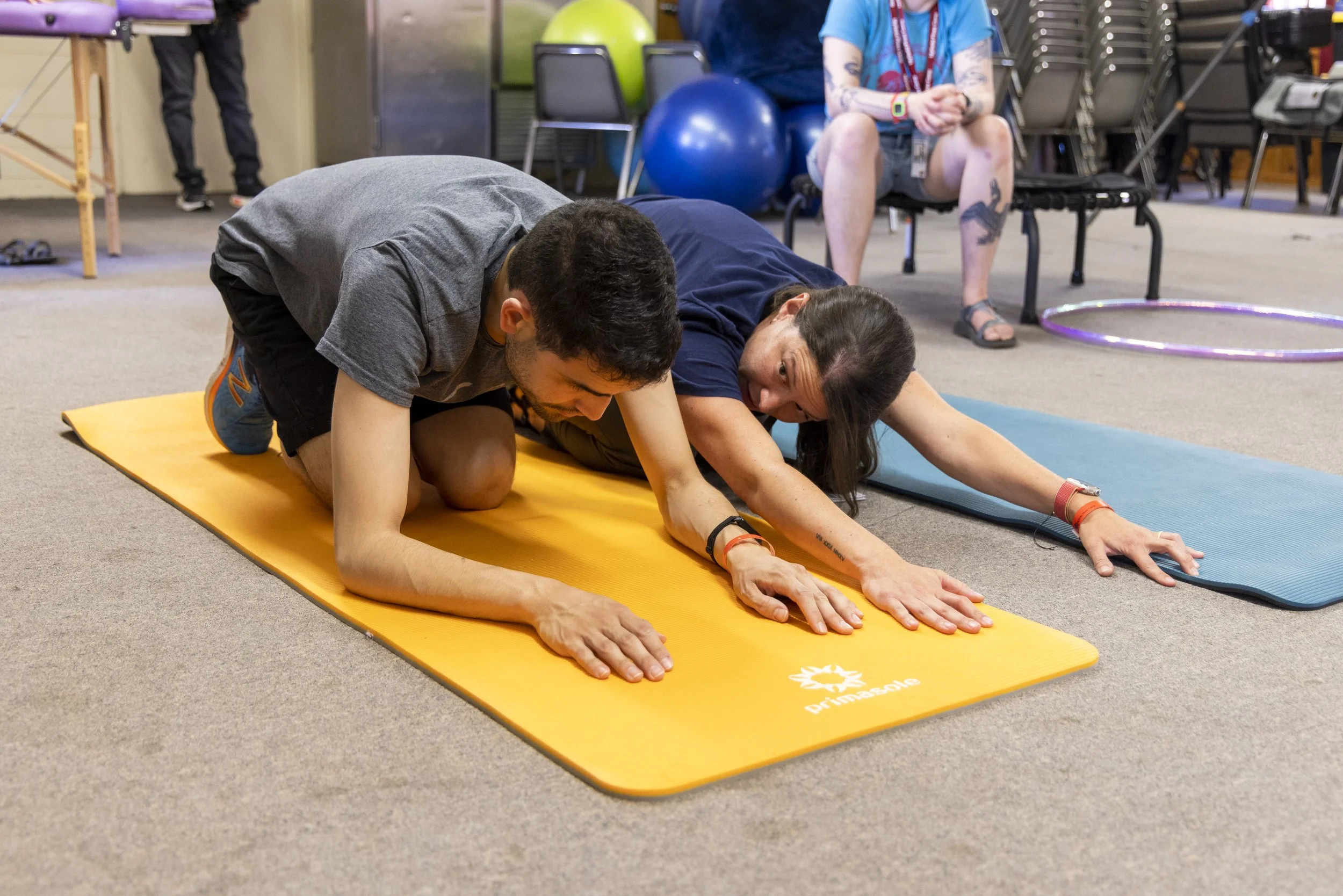Intentional Motor Practice: How to Integrate Movement into a Sensory Lifestyle
By Jessica Jordan, MS. OTR/L
The Power of Intentional Motor Practice: Elevating Daily Movement in a Sensory-Rich Lifestyle
Movement is essential to human connection, independence, and self-expression—especially for neurodivergent individuals, including those with autism and apraxia. Many of my clients and families hear me say, “All movement is good movement!” As occupational therapists, we often guide our clients toward intentional motor practice, a structured, purposeful way to build motor planning and coordination in a sensory-rich lifestyle. But for autistic individuals, particularly those who have apraxia or report motor challenges, movement can create barriers to autonomy. Intentional motor practice/activities is the engagement in purposeful movement tasks with guided support that is individual-specific.
This practice of intentional motor isn’t supposed to be only targeted during OT sessions, but integrated into a sensory-rich lifestyle. Intentional motor practice helps strengthen brain-body connections, improve cognitive motor control and coordination, and enhance overall regulation. But let’s dive deeper into this term, “intentional motor practice”.
What Is Intentional Motor Practice?
Intentional motor practice refers to purposeful, repeated engagement in movement-based activities that support motor planning, coordination, and functional independence. This practice is particularly crucial for individuals with apraxia or other movement-based challenges, where difficulties with motor initiation, sustaining motor movement, and inhibition can make even familiar tasks unpredictable or effortful.
Intentional motor practice focuses on:
Purposeful movement
Motor planning and breaking down or sequencing support
Task-oriented coaching that respects individual agency
Opportunities for success through graded levels of assistance
The goal is not just to build strength or endurance but to create or strengthen reliable movement pathways that promote autonomy.
What Is Motor Coaching?
Motor coaching is one of the most effective ways to support movement, especially for individuals with apraxia or unreliable motor planning. It might look like modeling a sequence, offering a rhythm to follow, or giving just the right visual cue to help the body begin.
In our course, we go deeper into what motor coaching actually looks like—how to pace it, what kinds of cues to try, and how to know when to give more support or back off. If your child has ever seemed inconsistent with movement or “shut down” mid-task, motor coaching may be the bridge they need.
Why Daily Motor Coaching Matters
For individuals with movement challenges, sporadic practice isn't enough. Motor learning thrives on repetition and consistency—meaning daily opportunities for intentional movement can make a profound difference. By embedding motor coaching into daily routines, we provide frequent, low-pressure opportunities for movement exploration, reducing the cognitive and physical load of motor execution over time.
A Sensory Lifestyle: The Foundation for Motor Growth
When sensory needs are met, the body has more capacity to take on motor challenges. That’s why we talk so much about a sensory-rich lifestyle—it lays the groundwork for movement to feel smoother and less effortful.
When our “sensory cups” are filled at the “just right” amount, we are at an optimal level for motor skill development through intentional and purposeful motor work. Integrating intentional movement into daily life can transform passive routines into empowering, sensory-supported rituals.
If the idea of “sensory cups” is new to you, we walk through it in detail inside our amazing course that you can find here. It’s a helpful way to understand why some days feel harder than others—and what we can do to help.
Movement Should Build Confidence
Intentional movement should feel empowering—not overwhelming. When we embed small, supported motor tasks into everyday routines, we give the brain and body a chance to practice without pressure. Over time, this builds more trust in the body’s ability to move, respond, and participate.
If this feels like a missing piece in your child’s support plan, we’d love to help. Our course is designed to walk you through the deeper “why” behind intentional motor work, and show you how to bring it into your family’s daily life.
Helpful Links
If you found this post helpful, you’ll love our therapy resources! Whether you’re a parent or therapist, our apraxia and autism courses are here to offer practical tools, compassionate guidance, and real-world strategies you can use every day.
👨👩👧👦 For Parents & Caregivers: Autism Training | Online Course for Parents and Caregivers
🧑🏫 For Therapists: Therapist Course for Apraxia and Autism | Mentorship for OTs and Therapists
🏥 Work With Us: In-Person Occupational Therapy (San Diego & Long Beach Areas) | Virtual Coaching





